Potential of Corn Stover And Coconut Shell as Environmentally Friendly Biomass Alternative Fuel
DOI:
10.29303/jpm.v20i1.8085Published:
2025-01-29Issue:
Vol. 20 No. 1 (2025)Keywords:
Biobriquettes; Calorific Value; Moisture ContentArticles
Downloads
How to Cite
Downloads
Metrics
Abstract
Energy sources from non-renewable materials such as petroleum are limited and will continue to decrease. Meanwhile, efforts to find renewable energy sources as reserves require quite expensive costs with a relatively long duration. Therefore, it is necessary to research renewable energy sources, such as corn stovers and coconut shells. This study is generally carried out by making charcoal or carbonization, briquetting, and testing the quality of briquettes. The variables used in this study are the composition of corn cob charcoal and coconut shells. The composition of the mixture used consists of 5 comparative variables, namely sample A = 1: 1, sample B = 1: 2, sample C = 1: 3, sample D = 2: 1, and sample E = 3: 1 with a drying temperature of 100 oC. This study aims to produce biobriquettes from variations in the ratio of good and quality corn cob and coconut shell so that they can be used as environmentally friendly alternative fuels. This study concludes that the optimal mixture variation to produce good quality biobriquettes is found in sample C with a water content of 2.20%, ash content of 3.22%, sulfur content of 0.07%, and a calorific value of 7339 cal/gram because it has a lower optimization compared to other samples and meets the specified standards.
References
Imam Ardiansyah, A. Yandra Putra, and Y. Sari, “Analisis Nilai Kalor Berbagai Jenis Briket Biomassa Secara Kalorimeter,” Journal of Research and Education Chemistry, vol. 4, no. 2, p. 120, Dec. 2022, doi: 10.25299/jrec.2022.vol4(2).10735.
A. Shahsavari, A. Karimi, M. Akbari, and M. A. Noughani, “Environmental Impacts and Social Cost of Non-Renewable and Renewable Energy Sources: A Comprehensive Review,” Journal of Renewable Energy and Environment, vol. 11, no. 1, pp. 12–27, Jan. 2024, doi: 10.30501/jree.2023.382598.1545.
A. Mangkau, A. Rahman, and G. Bintaro, “Penelitian Nilai Kalor Briket Tongkol Jagung Dengan Berbagai Perbandingan Sekam Padi,” 2011. [Online]. Available: https://api.semanticscholar.org/CorpusID:118695289
Prosiding Seminar Nasional Teknologi dan Informatika, 2017 : Kudus, 25 Juli 2017. Badan Penerbit Universitas Muria Kudus, 2017.
G. Fitriyano, I. Ismiyati, I. Purnawan, and R. F. Ramadhan, “Production and Characterization of Bio-Briquettes from Coconut Leaves and Cassava Peels,” International Journal of Applied Sciences and Smart Technologies, 2023, [Online]. Available: https://api.semanticscholar.org/CorpusID:266802427
A. Mangkau, A. Rahman, and G. Bintaro, “Penelitian Nilai Kalor Briket Tongkol Jagung Dengan Berbagai Perbandingan Sekam Padi,” 2011. [Online]. Available: https://api.semanticscholar.org/CorpusID:118695289
N. Hamidi, I. N. G. Wardana, and H. Sasmito, “Pengaruh Penambahan Tongkol Jagung Terhadap Performa Pembakaran Bahan Bakar Briket Blotong (Filter Cake),” 2012. [Online]. Available: https://api.semanticscholar.org/CorpusID:109245495
N. Kongprasert, P. Wangphanich, and A. Jutilarptavorn, “Charcoal briquettes from Madan wood waste as an alternative energy in Thailand,” in Procedia Manufacturing, Elsevier B.V., 2019, pp. 128–135. doi: 10.1016/j.promfg.2019.02.019.
A. T. R. H. Yonda Sandy, “9192-Article Text-31510-1-10-20220208,” vol. 2, pp. 69–75, Jan. 2022.
Agus Triono, “Karakteristik Briket Arang Dari Campuran Serbuk Gergajian Kayu Afrika (Maesopsis Eminii Engl) Dan Sengon (Paraserianthes falcataria L. Nielsen) DENGAN Penambahan Tempurung Kelapa (Cocos nucifera L),” 2006.
B. Indrawijaya, L. Mursida, N. Dwi Andini, J. Surya Kencana No, and P. Kota Tangerang Selatan, “Fuel Briquettes from Waste Tea With Adhesive Kanji Glue,” 2019.
F. Pratiwi Istomo et al., “Penetapan Nilai Kalori Dalam Batubara Dengan Kalorimeter Parr 6200,” Jul. 2017.
N. Nurhalim, R. B. Cahyono, and M. Hidayat, “Karakteristik Bio-Briket Berbahan Baku Batu Bara dan Batang/Ampas Tebu terhadap Kualitas dan Laju Pembakaran,” Jurnal Rekayasa Proses, vol. 12, no. 1, p. 51, Aug. 2018, doi: 10.22146/jrekpros.35278.
I. A. Cholilie and L. Zuari, “Pengaruh Variasi Jenis Perekat terhadap Kualitas Biobriket Berbahan Serabut dan Tandan Buah Lontar (Borassus flabellifer L.),” Agro Bali : Agricultural Journal, vol. 4, no. 3, pp. 391–402, Nov. 2021, doi: 10.37637/ab.v4i3.774.
Rayadeyaka Raditya Riseanggara, “Optimasi Kadar Perekat Pada Briket Limbah Biomassa Salah Satu Syarat Memperoleh Gelar Sarjana Teknologi Pertanian,” Bogor, Indonesia, 2008. [Online]. Available: www.esdm.go.id
D. Sundari et al., “Karakteristik Briket Arang Dari Serbuk Gergaji Dengan Penambahan Arang Cangkang Kelapa Sawit Skripsi Oleh : DIAH SUNDARI WIJAYANTI 041203023 / Teknologi Hasil Hutan,” 2009.
O. Bani, N. Sari, and C. Carnella, “Biobriquette Production From Palm Fronds And Shells: Effect Of Material Composition And Particle Size,” 2018.
E. Khusus Volume, M. Saukani, R. Setyono, and I. Trianiza, “Jurnal Fisika FLUX Pengaruh Jumlah Perekat Karet Terhadap Kualitas Briket Cangkang Sawit,” Jan. 2019. [Online]. Available: https://ppjp.ulm.ac.id/journal/index.php/f/159
F. S. Muhammad Riza, “Pembuatan Silika Gel Dari Abu Sekam Padi Dengan Pereaksi Asam Kuat Dan Asam Lemah Dengan Menggunakan Variasi Jumlah Abu Silikat,” vol. 22, pp. 55–62, 2022.
Y. Ristianingsih, A. Ulfa, and R. Syafitri, “Pengaruh Suhu Dan Konsentrasi Perekat Terhadap Karakteristik Briket Bioarang Berbahan Baku Tandan Kosong Kelapa Sawit Dengan Proses Pirolisis,” 2015.
M. J. K. B. R. A. W. W.G. Davenport, “Sulphuric Acid Manufactur,” pp. 16–20, Jan. 2006.
Y. Ristianingsih, A. Ulfa, and R. Syafitri, “Pengaruh Suhu Dan Konsentrasi Perekat Terhadap Karakteristik Briket Bioarang Berbahan Baku Tandan Kosong Kelapa Sawit Dengan Proses Pirolisis,” 2015.
H. Basuki, Y. Yuniarti, and F. Fatriani, “Analisa Sifat Fisik Dan Kimia Briket Arang Dari Campuran Tandan Kosong Aren (Arenga pinnata Merr) Dan Cangkang Kemiri (Aleurites trisperma),” Jurnal Sylva Scienteae, vol. 3, p. 626, Nov. 2020, doi: 10.20527/jss.v3i4.2346.
Djeni Hendra, “Pembuatan Briket Arang dari Campuran Kayu, Bambu, Sabut Kelapa, dan Tempurung Kelapa Sebagai Sumber Energi Alternatif,” vol. 25, pp. 242–255, Jul. 2007.
F. Pratiwi Istomo et al., “Penetapan Nilai Kalori Dalam Batubara Dengan Kalorimeter Parr 6200,” Indonesia, Jul. 2017.
A. Ismayana and dan Moh Rizal Afriyanto, “The Effects Of Adhesive Type And Concentration In The Manufacturing Of Filter Cake Briquettes As An Alternative Fuel,” 2020.
P. Perbedaan Jenis Kayu et al., “Standard Test Methods For Specific Grafity of Wood and Wood Based Materials. ASTM D-2395,” McGraw-Hill Book Company, 1996. [Online]. Available: http://etd.repository.ugm.ac.id/
L. O. A. B. A. Dedi Mardeni Suratin, “Uji Pembakaran Biobriket Tongkol Jagung dan Sekam Padi Menggunakan Perekat Sagu,” vol. 7, no. 3, pp. 113–121, Aug. 2022.
L. Industri Hasil Hutan Fakultas Kehutanan, U. Mulawarman Kampus Gunung Kelua, J. Ki Hajar Dewantara, and K. Timur, “Kualitas Briket Arang Berdasarkan Komposisi Campuran Arang Kayu Ulin (Eusideroxylon zwageri Teijsm & Binn) Dan Kayu Sengon (Paraserianthes falcataria) Rindayatno dan Dorotea Omi Lewar,” 2017.
I. Yanti and D. M. Pauzan, “Analisa nilai kalor dan karakteristik pembakaran biobriket campuran sekam padi dan tempurung kelapa pada temperatur optimum karbonisasi,” 2020.
Author Biographies
Ratno Budiyanto, Chemistry, University Annuqayah
Titin Setiawati, Chemical Engineering, Vocational School
Abd. Rahem, Chemistry, University Annuqayah
License
Copyright (c) 2025 Ratno Budiyanto, Titin Setiawati, Abd. Rahem

This work is licensed under a Creative Commons Attribution 4.0 International License.
The following terms apply to authors who publish in this journal:
1. Authors retain copyright and grant the journal first publication rights, with the work simultaneously licensed under a Creative Commons Attribution License 4.0 International License (CC-BY License) that allows others to share the work with an acknowledgment of the work's authorship and first publication in this journal.
2. Authors may enter into separate, additional contractual arrangements for the non-exclusive distribution of the journal's published version of the work (e.g., posting it to an institutional repository or publishing it in a book), acknowledging its initial publication in this journal.
3. Before and during the submission process, authors are permitted and encouraged to post their work online (e.g., in institutional repositories or on their website), as this can lead to productive exchanges as well as earlier and greater citation of published work (See The Effect of Open Access).











